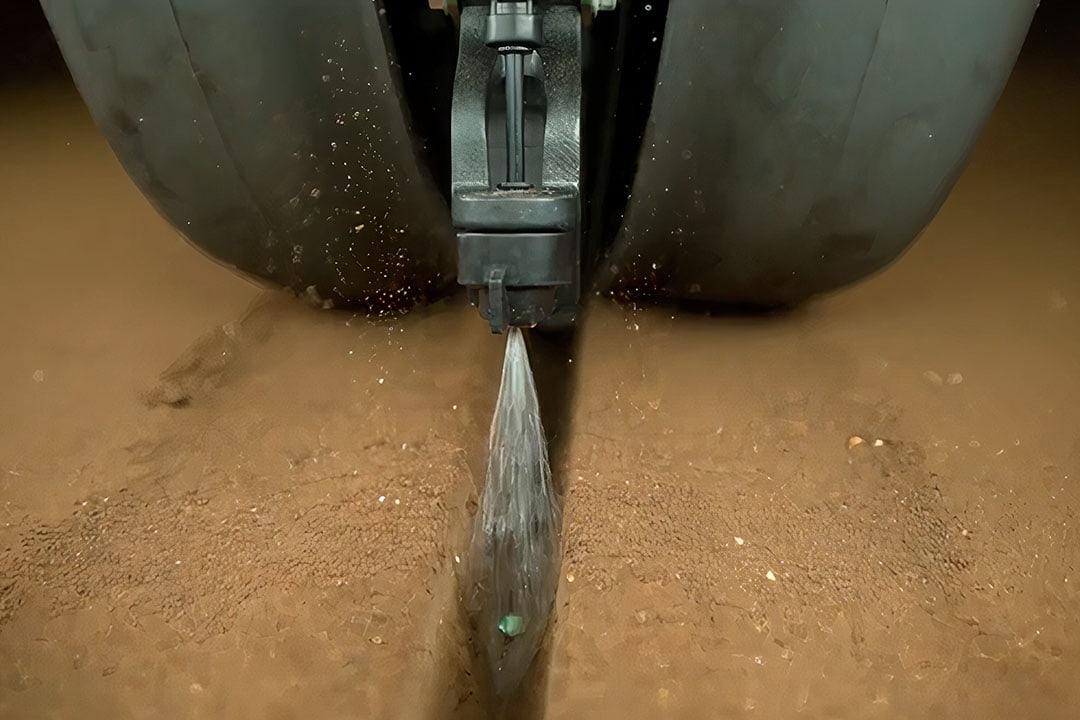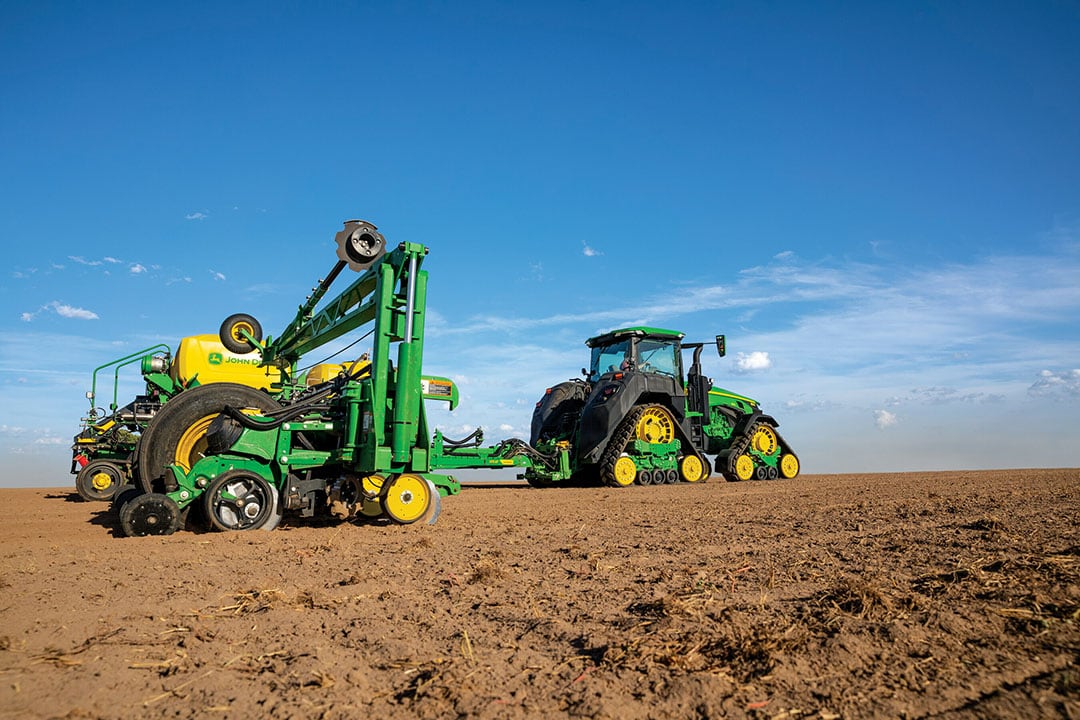Direct starter fertiliser application – a breakthrough

John Deere will very likely be the first company that can offer direct starter fertiliser application metered per seed – a breakthrough in precision agriculture worldwide.
John Deere will deliver its new technology ExactShot to farmers in March, on time for the US spring planting season.
The technology places starter fertiliser precisely onto seeds as they are planted in the soil. It uses sensors and robotics and can replace the current practise, where farmers are applying a continuous flow of fertiliser to the entire row of seeds.
The direct starter fertiliser application technology uses a sensor to register when each individual seed is in the process of going into the soil. As this occurs, a robot will spray only the amount of fertiliser needed, about 0.2 millilitre, directly onto the seed at the exact moment as it goes into the ground.
Text continues below video
60% less fertiliser needed
John Deere expects ExactShot allows farmers to reduce the amount of starter fertiliser needed during planting by more than 60%. According to John Deere, across the US corn crop alone, ExactShot could save over 93 million gallons (352 million litres) of starter fertiliser annually and prevent wasted fertiliser from encouraging weed growth or increasing the risk of running off the field into a waterway.
ExactShot is built on top of Deere’s ExactEmerge technology, and will be geared toward John Deere planters initially. The new Exact Shot direct starter fertiliser application technology is compatible with Deere’s autonomous, cloud connected agricultural vehicles, which the company plans to connect and automate by 2026 using a novel satellite connectivity solution. The price of ExactShot has not been disclosed yet.
Retrofit to existing planters
Analysts at J.P. Morgan say ExactShot will be the successor to ExactRate on John Deere planters. The technology can be retrofitted to existing planters potentially as far back as about 10 years, according to the analysts.
Deanna Kovar, who leads product strategy for John Deere globally, revealed the direct starter fertiliser application technology recently during John Deere’s CES 2023 keynote address. “Today, based on technology available to them, farmers spray fertiliser continuously down each row of seeds”, she said. “Even though only the seeds need a jolt. This is going to change. ExactShot allows farmers to place starter fertiliser precisely, at scale, with speeds up to ten miles (16.1 kms) an hour, and only where the seeds are planted.”
Text continues below image

720 seeds of corn per second
Corn is the one of the most responsive crops to starter fertiliser use. Currently, a high-speed planter with 24 ExactShot robots can plant 720 seeds of corn per second. The system moves through the field at twice the speed of legacy planters. “Given the challenges of weather and labour, this is huge”, Ms Kovar said.
On a good day, a single machine will plant 34 million corn seeds with precise placement and depth. While farmers are planting seeds, a sensor will register when each individual seed is going into the ground. The robotics will spray only the amount of fertiliser needed.
Less time to invest in application process.
The speed synchronisation precision in which the direct fertiliser application is happening, was previously inconceivable. Cameras and sensors have become better able to quantify more exact measurements and detect objects to a level that provides this kind of functionality.
Madelyn Koester, senior product manager and soil health lead at John Deere, explained in US media that based on feedback from farmers, John Deere created the new direct starter fertiliser application technology to answer two major barriers farmers have to using starter fertiliser today: the cost of starter fertiliser and the time they invest in the application process.
“One of the blockers for actually starting to use starter fertiliser is the fact that you often have to tender the planter with more product much more often than you would for corn seed alone”, Ms Koester said. “And the fact that we’re able to use 60% less product with this system means that they would be able to use starter fertiliser without actually having to tender the planter with more product as frequently as they would have in the past. That was huge.”
John Deere’s estimate of 60% savings is based on an average farm in the Midwest of the US, using a 10-34-O fertiliser.
Text continues below image

No longer an overflow that causes weeds to grow
John Deere says that having no fertiliser present between the seed, and fertiliser only on the target seed, means there is no longer an overflow that could cause weeds to grow. This happens with normal continuous flow fertilising, and eventually causes weeds to pull nutrients away from the crop.
Having less fertiliser waste on the land is a big advantage. Fertiliser can sometimes sit dormant for a season or more in the paddock, and has the potential to run off the paddock into waterways. It can also be broken down by soil microbes to release potent nitrous oxide. Although this greenhouse gas is one of the less common in the atmosphere, its ability to raise global temperature is 300-times stronger than carbon dioxide.
John Deere says that ExactShot will help farmers be economically and environmentally sustainable as they work to grow food, fuel and fibre. “With the global population expected to grow from 8 billion to nearly 10 billion by 2050, farmers need to increase production by 60% to 70% on today’s arable land”, John Deere emphasises.



